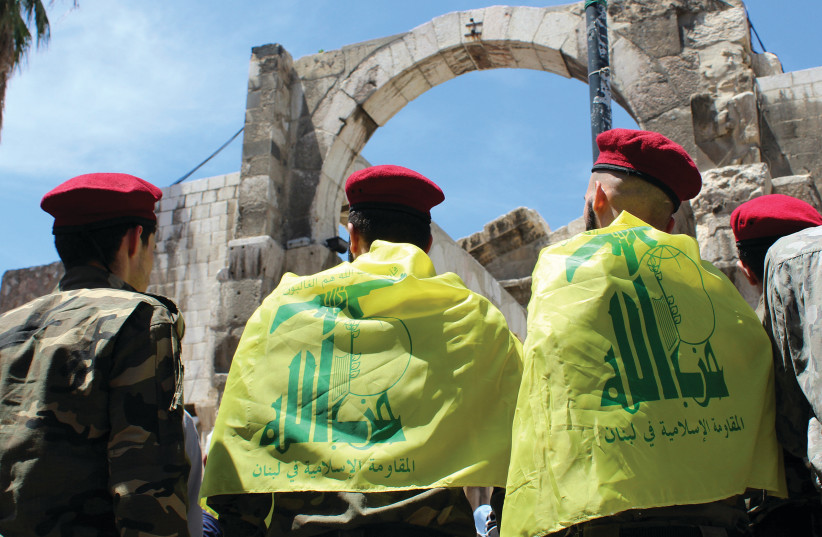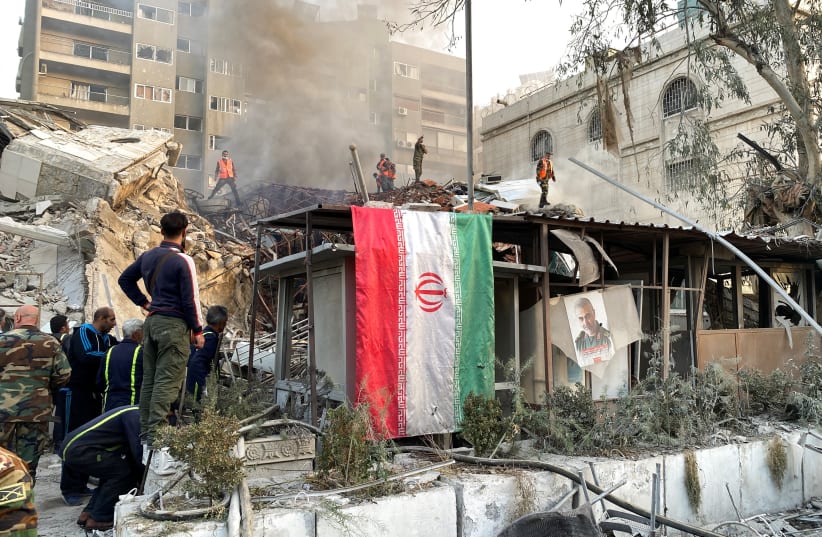Syrian air defenses confronted an “aggression” targeting multiple locations in Syria’s Hama countryside, state media SANA reported overnight between Sunday and Monday, following reports of an explosion heard in the same area.
Some 16 people were killed in the strike on Masyaf in the Hama Governorate, the State News Agency said.
Syrian media claims Israel is responsible for the attack. However, there has been no immediate comment from Israel. Jerusalem, as a general rule, does not comment on such operations but does when there are highly specific reasons to do so.
Iran uses Syria as a key route to send weapons to the Lebanese terrorist group Hezbollah, its Shi’ite proxy. Israel has targeted these transportation routes thousands of times, without admitting to most individual-specific incidents.
“Our air defense systems confronted” the attacker’s missiles and shot down some of them, a Syrian military source told the SANA news agency without providing further details.


A local Syrian health official quoted by SANA said 43 people had been wounded, including several critically, in the strikes.
Two regional intelligence sources said a major military research center for chemical arms production located near Masyaf was hit several times. It is believed to house a team of Iranian military experts involved in weapons production.
Hezbollah drones hit Israel
Syria’s state media also reported that the strikes caused two fires, which firefighters were working to extinguish.
The most recent major incident involved the Israeli bombing of an Islamic Revolutionary Guards Corps facility in Damascus in early April. This caused Iran to launch a major assault on Israel two weeks later, which was mainly thwarted.
It was unclear if the latest alleged Israeli attack was a one-off strike or a prelude to larger moves in the North or regarding Iran.
On Monday, the Commander of the US Central Command (CENTCOM) Gen. Michael Kurilla met with IDF chief of staff Lt.-Gen. Herzi Halevi in Israel to discuss the situation in the North (including both Lebanon and Syria), the IDF said.
The general visited the Northern Command with commanding officer Maj.-Gen. Ori Gordin, and held a situational assessment of the Command’s Underground Operations Center. He also reviewed the IDF’s operational plans for dealing with Hezbollah in Lebanon.
On the Lebanese front, a building in Nahariya was hit by a Hezbollah drone on Monday morning following the drone intrusion alerts that sounded in the area, according to the Fire and Rescue Authority. There were no injuries.
The IDF said that Hezbollah had launched two drones, noting that one of them had achieved a direct hit, but did not address whether the second had crashed harmlessly or retreated.
Starting at 10:49 a.m. local time, multiple drone intrusion alerts had sounded in the Western Galilee. Alerts sounded in Nahariya, Evron, and Shlomi, among other localities.
On Monday evening, the IDF said that two soldiers were wounded near Shlomi by three aerial Hezbollah attacks.
Although the IDF did not identify the nature of the threats, the language it used to describe the attack was also consistent with drone attacks.
In total, there were 51 aerial threat sirens on Monday, though the IDF at press time had not given a full breakdown of the different kinds of threats.
The IAF, both before and after these attacks, struck Hezbollah terrorists, military structures, and rocket launchers in Kfar Kila, Shuba, Tallouseh, as well as the areas of Kfarkela, Taybeh, Hanine, Khirbet Selm, and Yarine in southern Lebanon over Sunday and Monday.
In northern Gaza, reserve fighters discovered a Hamas machine for manufacturing weapons, an operational tunnel shaft, and multiple terror sites in Zeitun, the IDF said on Monday.
Over two weeks, following raids in the area, soldiers of the 16th Reserve Brigade, under the command of the 252nd Division, eliminated dozens of terrorists.
